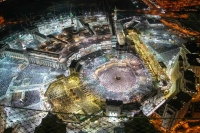
The capacity of the Grand Mosque in Makkah al-Mukarramah exceeds 1.7 million worshippers, including all the indoor prayer areas, external and internal courtyards, all floors in the Third Saudi Expansion and its related elements, as well as the remaining buildings of the Grand Mosque, the Mataf (circumambulation area), and the Sa'i area. The buildings of the Grand Mosque and its external and internal courtyard s offer a range of services for visitors, Umrah performers, and pilgrims. These i...
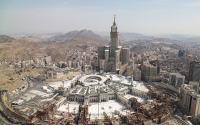
Wadi Ibrahim is located at the current site of the Holy Kaaba within the Grand Mosque in Makkah, the Kingdom of Saudi Arabia . It is the valley where Allah commanded His Prophet Ibrahim to make it a dwelling place for his descendants. His wife Hajar and his son Ishmael resided there, and it was in this valley that the Prophet Ibrahim built the Holy Kaaba. Wadi Ibrahim was barren, devoid of vegetation and water until Ibrahim prayed to his Lord to make it a place of safety and to provide its inha...
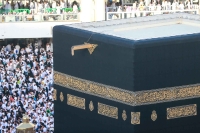
Wood represents a fundamental element in the construction of the roof of al-Kaaba al-Musharrafa in the Grand Mosque in Makkah al-Mukarramah , in addition to other building materials such as metal pieces and binding materials. It has specifications that distinguish it from other buildings, including: The ability to withstand loads for the longest possible period. The shrinkage rate is reduced to a level that makes it nearly negligible. Resistance to changes in various weather conditions, especia...
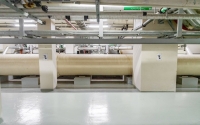
The General Authority for the Affairs of the Grand Mosque and the Prophet's Mosque employs several mechanisms to disinfect and purify the Grand Mosque from any contaminants. These include: · Disinfecting the mosque's corridors using environmentally friendly ozone technology. · Eliminating bacteria and viruses in the air and water. · Avoiding the use of chemical substances in the disinfection process. · Repeated disinfection several times a day to ensure its effectiveness and conti...
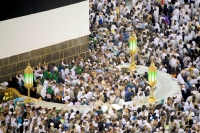
Hijr Ismail is located in the Grand Mosque in Makkah al-Mukarramah , adjacent to the northern side of al- Kaaba al-Musharrafa . It is considered a part of al-Kaaba. Hijr Ismail is shaped like a curved crescent wall with short doors on the eastern and western sides that connect it to al-Kaaba when closed. In the center of Hijr Ismail, the waterspout, Mizab , of al-Kaaba al-Musharrafa drains rainwater. It is the only side of the Kaaba where the Shadherwaan is at a lower level. ...
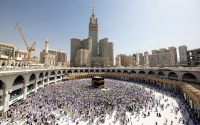
During the Saudi era, approximately 117 imams have served at the Grand Mosque in Makkah al-Mukarramah from 1924 to 2021, whether for a single obligatory prayer, Taraweeh , or Qiyam , as imams or preachers, regular or deputy. They are: Ibrahim Bin Khalaf Al Arif Abdullah Bin Ahmed Mirdad Abdullah Bin Mohammed al-Zawawi Omar Bin Mohammed al-Kurdi Amin Bin Mohammed Mirdad Abdullah Bin Ali Bin Hamid Darwish Bin Hassan al-Ujaimi Hamad Bin Mohammed al-Khatib Ahmed Bin Ali Najjar Abu Bakr Bin Mohammed...
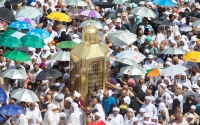
The Maqam of the Prophet Ibrahim peace be upon him (PBUH) is located adjacent to the Eastern Wall of al-Kaaba al-Musharrafa, within the Mataf area. It contains a historical stone with dimensions of about fifty cm in length, width, and height. In its center, the imprints of the feet of Prophet Ibrahim (PBUH) appear in two oval-shaped holes. These were formed when Prophet Ibrahim stood on the stone while building al-Kaaba al-Musharrafa, and his son, Prophet Ismail (PBUH), handed him stones for th...

Marwa is a hill that is part of Mount Qaiqaan. It is where pilgrims and Umrah performers complete the ritual of Sa’i . The Sa’i area between Safa and Marwa consists of four floors, containing designated pathways for carts and individuals with special needs and points for cart assembly. Ascending to Marwa on the ground floor is facilitated by a ramp with inclines suitable for the needs of visitors and their carts. Jabal Marwa is sterilized by architectural teams to remove dust and clean the ...
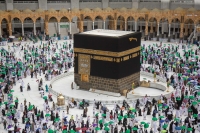
Permission to enter al-Kaaba al-Musharrafa in the Grand Mosque in Makkah al-Mukarramah depends on certain conditions and is limited to specific individuals. It cannot be treated or entered as if it were a public site. Al-Kaaba al-Musharrafa has custodians, Sadanah , who have inherited the key since the time of Prophet Muhammad, peace be upon him (PBUH). The key is currently held by the eldest custodian. They are also referred to as al-Hajabah as they are responsible for carrying the key when al...
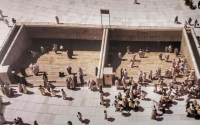
Zamzam water is drawn from the Zamzam well, located east of al-Kaaba al-Musharrafa, in the circumambulation area adjacent to al-Multazam in the Grand Mosque in Makkah al-Mukarramah. It is an ancient well from the time of Ismail, peace be upon him (PBUH). Zamzam water has several names, with 'Zamzam' being the most commonly used. These names include: Maktuma . Madnuna. Shuba'a . Suqya al-riwa' . Rakdat Jibrail. Hazmat Jibrail. Hazmat al-malek. Shifa' suqm. Ta'am tu&...
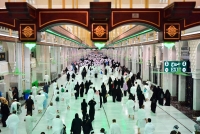
Safa is a mountain located inside the Grand Mosque in Makkah al-Mukarramah in the Kingdom of Saudi Arabia. Pilgrims and Umrah performers begin their Sa'i ritual, the walk between the hills of Safa and Marwa Mountains. Safa is located to the south, slightly towards the east, about 130 m from al-Kaaba al-Musharrafa. It is characterized by its smooth black stones. Safa Mountain is adjacent to the eastern courtyard of the Grand Mosque from the outside. During the reign of King Fahd Bin Abdulaz...
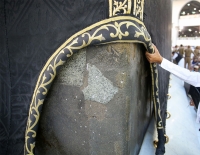
The Yamani Corner is the corner of al-Kaaba al-Musharrada located at its southwestern edge. It precedes the Black Stone during the Tawaf and is directly opposite it. It is one of the corners of al-Kaaba built on the original foundations laid by Ibrahim and Ismail, peace be upon them. Pilgrims are advised to touch the Yamani Corner without kissing it or signaling towards it from afar. One of its notable virtues is that touching it helps to absolve sins. The Prophet Muhammad, peace be upon him (P...